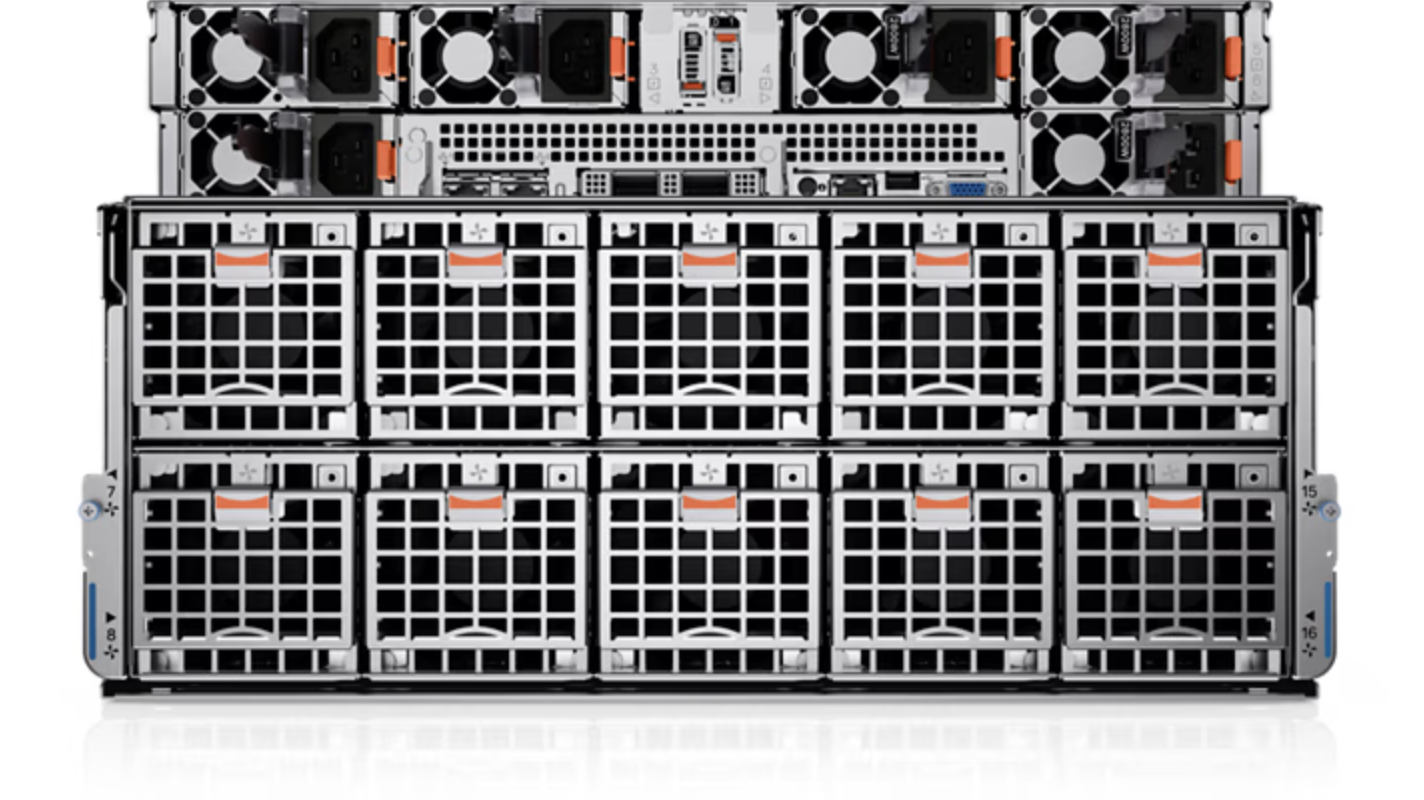Dell cosies up with AMD to expand its generative AI portfolio to offer more choice to customers — it’s also embracing standards-based networking, a thinly veiled dig at Nvidia

Dell has added an AMD-powered server to its high-performance computing portfolio for AI workloads.
In addition to an Nvidia-powered version, customers will soon be able to purchase a new version of the Dell PowerEdge XE9680 equipped with eight AMD Instinct MI300X accelerators. This helps companies train and run their own in-house large language models (LLMs) – offering 1.5 GB of high-bandwidth memory (HBM3) and more than 21 petaFLOPS of performance.
Customers can also scale the systems they deploy with the Global Memory Interconnect (xGMI) standard, connecting AMD's GPUs via an Ethernet-based AI fabric to a Dell PowerSwitch Z9664F-ON. It follows Dell's launch of the device equipped with Nvidia H100 GPUs earlier this year.
Dell takes an open approach to its AI infrastructure
This comes along with a new standard called Dell Validated Design for Genative AI with AMD. It's a mouthful, but essentially a framework for organizations that want to use their own hardware and network architecture to run LLMs.
Dell customers could use the solution to build generative AI platforms with various frameworks that guide the integration of the technology, as well as the physical installation and optimization of performance.
It also uses AMD ROCm-powered AI frameworks, an open source suite of drivers, development toolkits, and APIs compatible with AMD Instinct accelerators. They include popular frameworks such as PyTorch, TensorFlow and OpenAI Triton – all of which have native support on the PowerEdge XE9680 equipped with the AMD accelerators.
Dell's continued push towards standards-based networking, as a member of the Ultra Ethernet Consuortium (UEC), means it has taken a more open approach to Nvidia's.
While he is a leader in the AI infrastructure sector, Nvidia is different from AMD in the sense that the latter advocates an open Ethernet for AI – in which switches from different vendors can work together on the same system. Similarly, Dell wants companies to take an open approach to the compute, fabric and storage components needed to power internal generative AI models.
The new hardware and services comprising Dell's latest AI push are expected to be available in the first half of next year, the company said.
